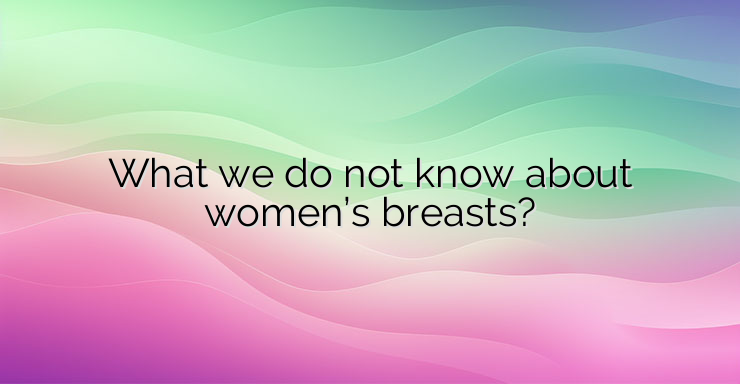A number of peculiarities in the structure and functions of women’s breasts make them easily susceptible to diseases. By learning more about them, we will know how to take better care of their health and beauty… 1. They develop later than other organs Breasts develop later than other organs in our body. Unlike the brain or the liver, for example, whose structure is formed already in the embryonic stage of development, the bust literally grows “from nothing” during puberty. In the different phases of the menstrual cycle, its volume varies by about 14%, which is due to changes in cell growth and water retention. A female breast weighs an average of 350 g, but can double in size at the end of pregnancy. 2. The two breasts are different The fact that you don’t fill both bra cups equally is by no means a cause for concern. It is normal for one breast to be about 40 milliliters larger than the other. That’s almost a fifth of a cup. 3. They develop at an ever earlier age Today, breasts begin to form an average of a year earlier than in previous generations. According to some scientists, the reason lies in the obesity boom in developed countries, but according to others, this is only part of the problem. Today, girls are maturing at an earlier age, which may be due to estrogen-mimicking chemicals in the food and cosmetics they use daily. Breast cancer foundations advise avoiding products containing parabens and bisphenol A, an industrial chemical found in plastic products. NEWS_MORE_BOX 4. They are the source of the perfect food Breast milk is rich in vitamins, minerals, proteins and fats that the baby needs to grow. In addition, it contains antibodies and probiotics that strengthen immunity and protect the newborn from salmonella and Escherichia coli. Research shows that breast milk contains endocannabinoids similar to those found in marijuana, which help the infant relax and prevent overeating. 5. They’re like sponges that soak up toxins Because of the fatty tissue they’re made of, breasts absorb pollutants like two sponges. Potentially toxic chemicals such as pesticides, polychlorinated biphenyls, mercury, lead, fungicides and others accumulate in the mammary glands of the modern woman. Some of them can remain in the chest for years and even decades. The high fat and protein content of milk also attracts heavy metals and other pollutants, which the mother passes to her child through breast milk. Therefore, it is desirable for women to limit their exposure to gasoline vapors and cigarette smoke. 6. The breast is particularly susceptible to cancer More than 1.3 million women were diagnosed with breast cancer in 2008, and the number is expected to increase by 26% by 2020. There are three main factors that determine their vulnerability: They are dynamic organs forming cells throughout our lives. The adipose tissue they are made ofhas the property of retaining industrial chemicals. Breasts are full of hormone receptors and hormones that can feed cancer cells – tumors form and grow in the presence of estrogen and progesterone. To reduce risk factors, it is necessary to limit alcohol and cigarettes, and also to avoid unnecessary exposure to radiation.


Leave a Reply